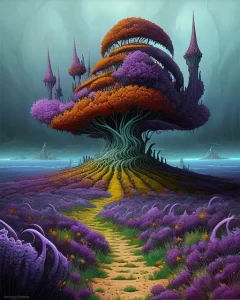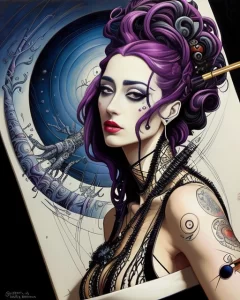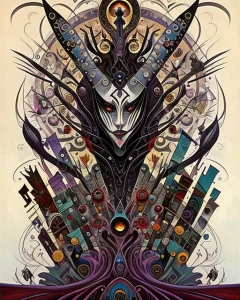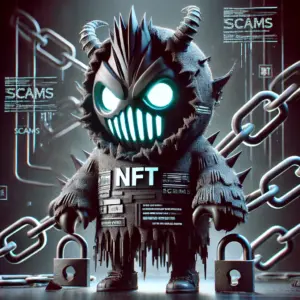The world of Non-Fungible Tokens (NFTs) has exploded in recent years, captivating the attention of artists, musicians, gamers, and collectors alike. These unique digital assets, representing ownership of digital or physical items, have revolutionized the way we interact with art, music, and even virtual worlds. If you’re an aspiring creator looking to dive into this exciting realm, creating your own NFTs is a fantastic way to express your creativity and connect with a global audience.
But where do you begin? The landscape of NFT platforms can be overwhelming, each offering a unique set of features and benefits. This comprehensive guide will explore the top NFT platforms for creating your own NFTs, providing you with the information you need to make an informed decision and embark on your NFT journey.
Table of Contents:
- Exploring the Top NFT Platforms: A Comprehensive Overview
- OpenSea
- Rarible
- Nifty Gateway
- Mintable
- Foundation
- SuperRare
- NBA Top Shot
- Navigating the NFT Creation Process: A Step-by-Step Guide
- Step 1: Choose an NFT Platform
- Step 2: Create an Account and Connect a Wallet
- Step 3: Prepare Your NFT Content
- Step 4: Mint Your NFT
- Step 5: Promote and Market Your NFT
- Avoiding Scams and Staying Safe in the NFT World
- The Future of NFT Creation Platforms: Emerging Trends and Innovation
- Conclusion: Unleashing Your Creativity and Embracing the NFT Revolution
- Frequently Asked Questions (FAQs)
Exploring the Top NFT Platforms: A Comprehensive Overview
Let’s delve into the leading NFT platforms, exploring their strengths, functionalities, and target audiences.
OpenSea
OpenSea, often referred to as the “eBay of NFTs,” is the largest and arguably most well-known NFT marketplace. Its user-friendly interface and vast collection of NFTs make it a popular choice for both seasoned collectors and newbie creators. Let’s unpack some of its key features:
Wide Variety of NFTs: OpenSea boasts an expansive marketplace teeming with digital art, collectibles, gaming assets, domain names, and virtual worlds.
Extensive Functionality: You can create, list, buy, and sell NFTs with ease, and it supports multiple blockchains including Ethereum, Polygon, and Solana.
Low Transaction Fees: Compared to other platforms, OpenSea’s transaction fees are relatively low.
Creator Tools: OpenSea offers a suite of creator tools to streamline the minting process and manage your NFT collection.
Pros:
Massive user base and high trading volume.
Extensive support for various blockchains.
User-friendly interface and comprehensive resources for creators.
Cons:
High competition due to the large number of sellers.
Can be prone to scams and fraudulent activities.
Rarible
Rarible, known for its community-driven approach, shines as a decentralized platform where creators have more control over their NFT projects. Here’s a closer look at its notable features:
Decentralized Structure: Rarible is governed by its community through the $RARI token. Its governance token empowers community members to vote on platform updates and improvements.
Creator-Focused Tools: It offers a range of creation tools and features designed to make the minting process efficient and accessible.
Royalty Payments: Rarible allows artists to set royalty fees on their NFTs, ensuring that they receive ongoing payments for their creations whenever their NFTs are resold.
Pros:
Strong community focus and governance.
Emphasis on creator ownership and control.
Support for royalty payments, providing creators with ongoing income.
Cons:
Limited user base compared to OpenSea.
Potentially less liquidity compared to larger marketplaces.
Nifty Gateway
Nifty Gateway, established by the Winklevoss twins, serves as a curated platform that emphasizes high-quality NFTs and a seamless user experience. Here are some of its key advantages:
Exclusivity: Nifty Gateway focuses on exclusive drops from renowned artists and celebrities.
High-Quality NFTs: The platform is known for its curated selection of high-quality digital art and collectibles.
User-Friendly Interface: Its user experience is intuitive and designed to be accessible to a wider audience.
Direct Sales: Creators can sell their NFTs directly through Nifty Gateway, reducing the need for secondary marketplaces.
Pros:
Focus on high-quality NFTs and exclusive drops.
Strong reputation and brand recognition.
Intuitive user interface and exceptional customer support.
Cons:
Higher fees compared to some other platforms.
Stricter vetting process for creators.
Mintable
Mintable, known for its flexibility and simplicity, caters to both novice and experienced creators. Here’s a peek at its standout features:
Multiple Blockchain Support: Mintable allows you to create NFTs across various blockchains, including Ethereum, Polygon, and Flow.
Mint-to-Earn Program: The platform offers a unique “mint-to-earn” program where creators earn rewards for listing their NFTs on the platform.
Flexible Pricing Options: Mintable provides creators with a variety of pricing options, including auctions, fixed-price listings, and Dutch Auctions.
Easy Integration: The platform simplifies the integration process for creators, allowing them to connect their wallets and start minting without hassle.
Pros:
Flexible and user-friendly platform.
Support for multiple blockchains.
“Mint-to-earn” program for creators.
Cons:
Smaller user base compared to some other platforms.
Limited resources and support for creators compared to some other options.
Foundation
Foundation, committed to showcasing high-quality art, is a platform dedicated to showcasing the best digital art NFTs from a carefully curated group of creators. Here are some of its notable aspects:
Curated Platform: Foundation curates its artists, ensuring a high standard of artistic quality.
Focus on Artists: The platform is designed to provide creators with a strong voice and a dedicated community.
Exclusive Drops: Artists on Foundation launch their NFTs through exclusive drops, often with limited availability.
Auction-Based Sales: Foundation mainly relies on an auction-based system for NFT sales, allowing collectors to bid on and compete for unique artworks.
Pros:
Curated platform with a focus on art quality.
Dedicated community and artist support.
Exclusivity and limited availability of NFTs.
Cons:
Stricter vetting process for creators.
Limited number of creators and NFTs
Potentially lower liquidity due to a smaller user base.
SuperRare
SuperRare, a platform known for its artistic excellence, aims to provide a community for artists and collectors to discover and engage with unique digital artworks. Here are some of its key features:
Focus on Digital Art: SuperRare specializes in high-quality digital artworks by renowned artists.
Curated Selection: The platform maintains a curated selection of artists and artworks, ensuring a high standard of creativity.
Direct Sales: Artists can sell their NFTs directly to collectors, eliminating the need for secondary marketplaces.
Community Engagement: SuperRare fosters a vibrant community for artists and collectors to interact, discuss, and share their passion for digital art.
Pros:
High-quality digital art and a curated selection of artists.
Focused on community and artist support.
Direct sales for artists, eliminating the need for secondary marketplaces.
Cons:
Lower trading volume compared to larger platforms like OpenSea.
Strict selection process for new artists, making it harder for newcomers to join the platform.
NBA Top Shot
NBA Top Shot, a platform dedicated to NBA fans, offers a unique platform for collecting and trading NBA moments through NFTs. Here are some of its key features:
NBA Licensing: NBA Top Shot is officially licensed by the National Basketball Association.
Collect NBA Moments: The platform offers a variety of highlight clips and moments featuring NBA players, showcasing iconic plays and memorable performances.
Unique Gameplay: The platform incorporates a gamified experience, allowing users to collect, trade, and unlock special rewards.
Active Community: NBA Top Shot fosters a vibrant community of basketball enthusiasts who can connect with other fans and participate in contests and challenges.
Pros:
Official NBA licensing and a unique platform for NBA fans.
Gamified experience and active community.
Potential for significant returns based on the popularity of NBA moments.
Cons:
Niche platform focused solely on NBA content.
Potential volatility in the market for NBA moments.
Navigating the NFT Creation Process: A Step-by-Step Guide
Now that you’ve explored the leading NFT platforms, let’s dive into the creation process. While each platform might have slightly different steps, the general process remains fairly consistent. Here’s a comprehensive breakdown of how to create your own NFTs:
Step 1: Choose an NFT Platform
The first step is to select the platform that best aligns with your needs and your type of content. Consider the following factors:
Target Audience: Do you want to reach a broad audience or a niche community?
Type of Content: What type of content are you creating (e.g., art, music, gaming assets)?
Features and Functionality: What features are important to you (e.g., royalty payouts, community features)?
Fees and Commissions: Compare the fee structures and commission rates of different platforms.
Step 2: Create an Account and Connect a Wallet
Once you’ve chosen a platform, create an account and connect a cryptocurrency wallet. Here’s a quick overview:
Create an account: Most platforms require basic information like your email address and username.
Connect a wallet: A cryptocurrency wallet allows you to store and manage your digital assets. Popular wallets include MetaMask, Coinbase Wallet, and Trust Wallet.
Step 3: Prepare Your NFT Content
Before minting your NFT, ensure your content is ready. This involves the following steps:
Create your art or digital asset: Your NFT could be a piece of digital art, a piece of music, a collectible item, or even a virtual world asset.
Determine your NFT metadata: Metadata is crucial for defining your NFT’s attributes. This includes information like title, description, and any special features or traits.
Choose a file format: The most common file formats for NFTs include JPG, PNG, MP3, and MP4.
Step 4: Mint Your NFT
Once your content is ready, it’s time to mint your NFT. The minting process involves uploading your content and metadata to the blockchain. Here’s a general breakdown:
Navigate to the minting section: Most platforms have a dedicated area for creating and minting NFTs.
Upload your content and metadata: Follow the platform’s instructions to upload your files and provide relevant information.
Choose a blockchain network: Depending on the platform, you’ll have the option to mint your NFT on different blockchain networks like Ethereum, Polygon, or Solana.
Set a price or choose an auction format: Determine the pricing model for your NFT, choosing either a fixed price or an auction format.
Confirm your transaction: Review your minting details and confirm the transaction to finalize the process.
Step 5: Promote and Market Your NFT
After creating your NFT, it’s important to promote it to attract potential buyers. Here are some marketing strategies you can implement:
Social Media Marketing: Share your NFT on platforms like Twitter, Instagram, and Discord, making use of relevant hashtags.
Community Building: Engage with communities and collectors related to your niche.
Content Marketing: Create blog posts, articles, or videos describing your NFT and its value.
List on Marketplaces: List your NFT on different marketplaces to increase its visibility.
Avoiding Scams and Staying Safe in the NFT World
While the NFT space presents exciting opportunities, it’s important to be aware of potential scams and risks. Here are some tips to stay safe:**
Verify Platform Legitimacy: Research platforms thoroughly before creating an account or listing your NFTs. Look for reviews, testimonials, and community discussions.
Be Wary of Phishing Attempts: Beware of fake emails and websites that mimic legitimate platforms.
Protect Your Wallet: Use strong passwords and enable two-factor authentication for your cryptocurrency wallet.
Use Reputable Exchanges: Trade your NFTs on trusted and reputable exchanges.
Stay Informed: Keep up-to-date with the latest security threats and best practices for protecting your digital assets.
The Future of NFT Creation Platforms: Emerging Trends and Innovation
The NFT landscape is constantly evolving, with new platforms emerging and existing ones introducing innovative features. Here’s a glimpse into some of the future trends shaping the NFT space:
Multichain Functionality: Expect more platforms to support multiple blockchains, offering creators greater flexibility.
Enhanced Creator Tools: Platforms are likely to invest in advanced and user-friendly creator tools, enabling creators to mint and manage NFTs more efficiently.
Community Governance: Decentralized platforms will continue to embrace community governance models, empowering creators and users to shape the future of the platforms.
Conclusion: Unleashing Your Creativity and Embracing the NFT Revolution
Creating your own NFTs offers a unique and exciting opportunity to express your creativity, connect with a global audience, and potentially generate income. Choosing the right platform is crucial for success, so carefully consider your needs, goals, and the type of content you’re creating.
Remember that the NFT space is constantly evolving, so staying informed about emerging trends and innovations is essential. By embracing best practices, staying safe, and leveraging the power of these platforms, you can embark on your NFT journey with confidence and unleash your creative potential in this digital revolution.
Frequently Asked Questions (FAQs)
Q1: Do I need to be an artist to create NFTs?
No! Anyone can create NFTs. While digital artwork is a popular type of NFT, you can create NFTs for various things like music, videos, collectibles, photos, virtual worlds assets, and more!
Q2: What are the risks associated with creating NFTs?
While NFTs offer exciting opportunities, there are risks to be aware of, such as scams, market volatility, and potential security breaches.
Q3: Are NFTs sustainable?
The environmental impact of NFTs is a complex issue. Some blockchain networks, like Ethereum, have high energy consumption associated with minting. However, platforms are exploring solutions, such as using more energy-efficient blockchains or carbon-offsetting programs.
Q4: What are the potential benefits of creating NFTs?
Besides the potential for financial gain, creating NFTs offers numerous benefits, including:
Direct connection with fans and collectors.
Increased visibility and exposure for your work.
Ownership and control over your assets.
Potential royalty payments on secondary sales.
Q5: How can I learn more about NFTs?
There are numerous resources available online to learn more about NFTs.
Websites: Read articles and blog posts from reputable sources.
YouTube Channels: Watch videos explaining the basics of NFTs and explore case studies of successful NFT creators.
Communities: Join online communities on platforms like Reddit and Discord to engage with other NFT enthusiasts and ask questions.






